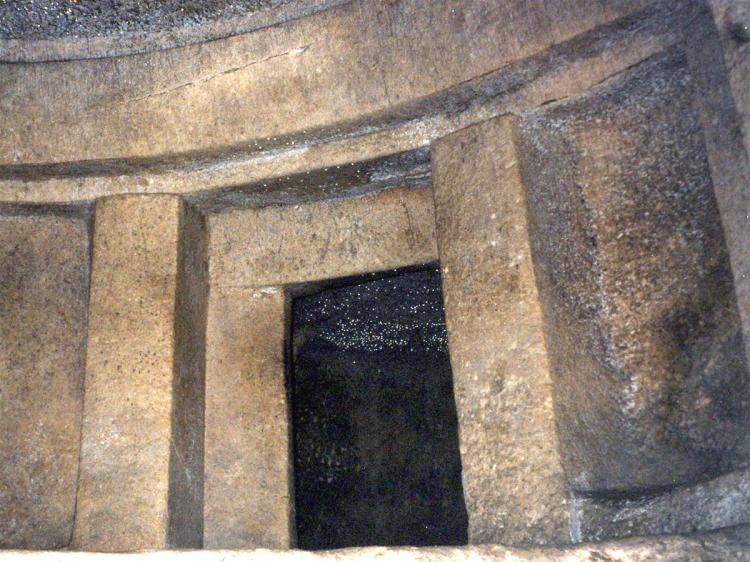Ancient people of the Mediterranean island of Malta may have purposely used sound to produce an altered state of mind, according to the Old Temples Study Foundation (OTSF), a Florida-based nonprofit organization that supports research and education regarding the ancient monuments of Malta.
The 6,000-year-old Hypogeum of Hal Saflieni in southern Malta is a 500-square-meter, three-level underground temple complex carved out of solid limestone. It is one of several ancient Maltese megalithic monuments created by a sophisticated and skilled people more than a thousand years before Stonehenge or the pyramids of Egypt were built.
Archeologists date the Hypogeum from around 3600 B.C., and it was active until about 2400 B.C., at which point all the megalithic temples of Malta abruptly went out of use, explained Linda Eneix, president of OTSF.
The Hypogeum includes numerous halls and chambers of different shapes and sizes, some imitating the architecture of the above-ground temples, and a mysterious “echo” chamber. Since the remains of around 7,000 people, reportedly all jumbled up together, were found in the Hypogeum after it was accidentally discovered in 1902, most scholars suggest it was used as a burial place but also had some ritualistic or religious uses. Eneix believes these rituals may have been linked to the veneration of Mother Earth.
“There is no way we are ever going to know what they did, but understanding the way the original people manipulated the stone for light and sound confirms that there was sophisticated intentional planning,” said Eneix. “The acoustics are a fascinating example.”
In the Oracle Chamber, on the second level of the Hypogeum, there is a small oval niche at face level, said Eneix. If a man with a deep voice speaks into it, it produces a strong echo, or resonance, that spreads throughout the complex.
“Dark markings that can still be seen on the rim of this niche were made by many, many hands resting there. There are red ochre markings inside this face box. There is an amplification channel carved into the ceiling of the chamber, and the surviving traces of complex designs in red ochre—like prehistoric musical chanting guides,” she added.
Eneix got the idea to further investigate the acoustic phenomenon after watching a film called “Sounds of the Stone Age” on a flight from London.
OTSF tested the pattern of resonance in several of the ancient Maltese temples and found it occurred at a frequency of 110 or 111 hertz—within the range of a low male voice. This was consistent with research published in 1996 by the Princeton Engineering Anomalies Research group, which found that some ancient megalithic chambers in the U.K. and Ireland sustained a strong resonance at a frequency of between 95 and 120 hertz.
Research by Dr. Ian A. Cook and colleagues from UCLA, published in the journal Time and Mind in 2008, used electroencephalography (EEG) to monitor the brain activity of volunteers while they listened to different frequencies of sound. They found that at 110 hertz, the brain activity suddenly changed. The section of the brain responsible for language processing became relatively deactivated, and the areas related to mood, empathy and social behavior “switched on.”
“Clearly, [the early people] liked something they were getting from it and they built on what they observed to enhance it,” Eneix said.
Archeologists have not yet been able to explain how this sophisticated engineering came into being almost 6,000 years ago, but the ancient temple builders of Malta may have been some of the first to use acoustics in religious rituals in a long tradition spanning the ancient Greeks and Romans.






Friends Read Free